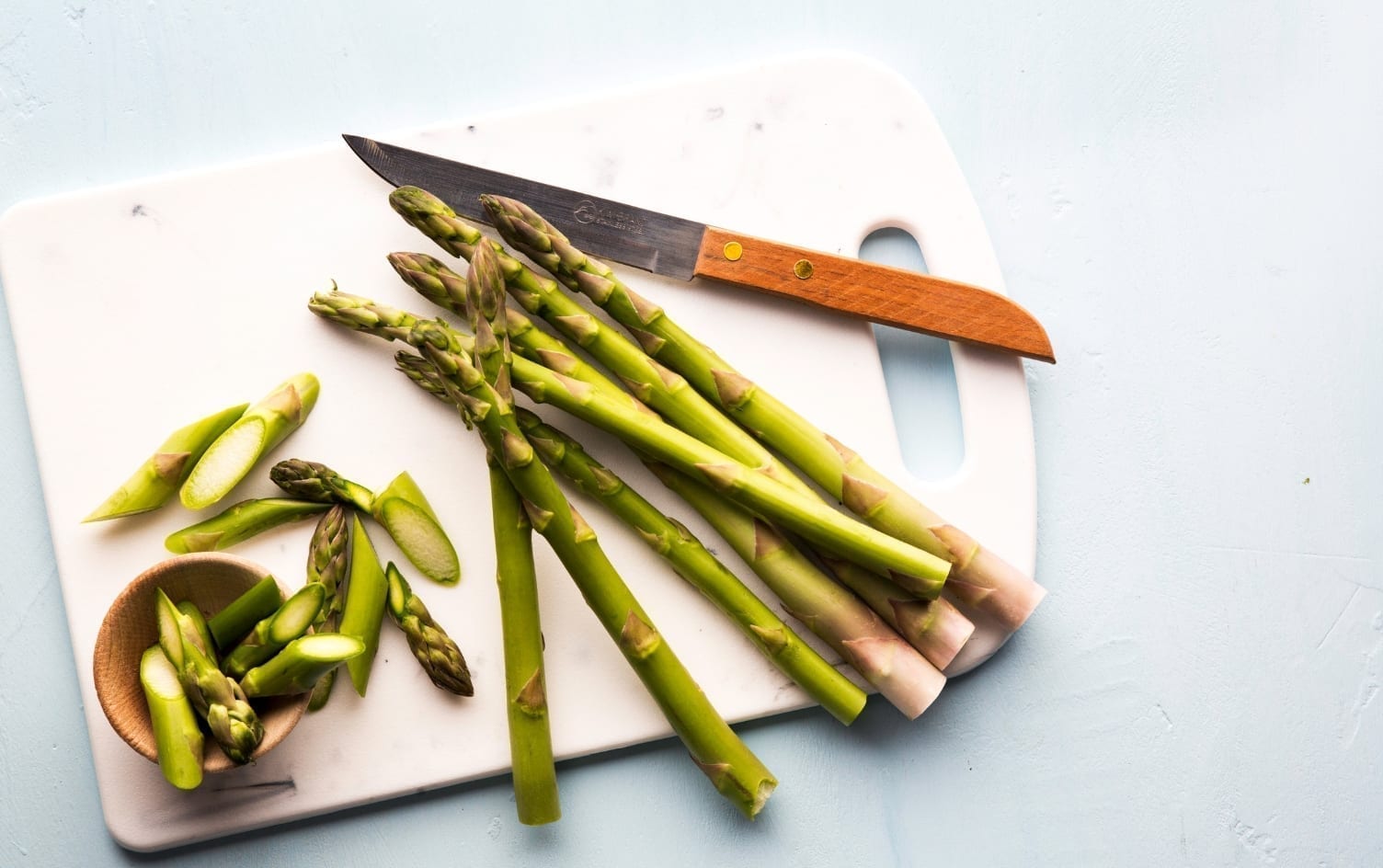You know making meals at home is a good way to eat healthier and save money compared to picking up takeout. But you may not notice just how much food you waste when you’re prepping your ingredients. Things like potato skins, carrot peels, beet greens and kale stems all too often head to the trash, meaning you’re missing out on valuable nutrients.
Eating many fruits and vegetables from top to bottom, including the skin, can deliver a variety of nutrients, says Cathy Kapica, RD, food scientist and CEO of The Awegrin Institute, an independent consultancy based in Chicago.
However, the specific type of nutrient depends on whether you’re eating the leaves, stem or peel. For example, peels are “a rich source of fiber and many of the phytonutrients are just below the skin. If you peel too deep, you get rid of those,” explains Kapica. A good illustration is apples. A substance found on apple peels, ursolic acid, has been shown in animal studies to have anti-obesity effects, according to research in PLOS One. The nutrients in apple peels may also have cancer-protecting properties.
It’s also a more sustainable way to eat. “What’s best for people and the planet is to get more nutrients from the food that we’re already growing and eating,” adds Kapica. The average household wastes $1,500 worth of food annually. You can count this as one way to lessen that burden — and eat healthier, too.
Here are thirteen ways to get started:
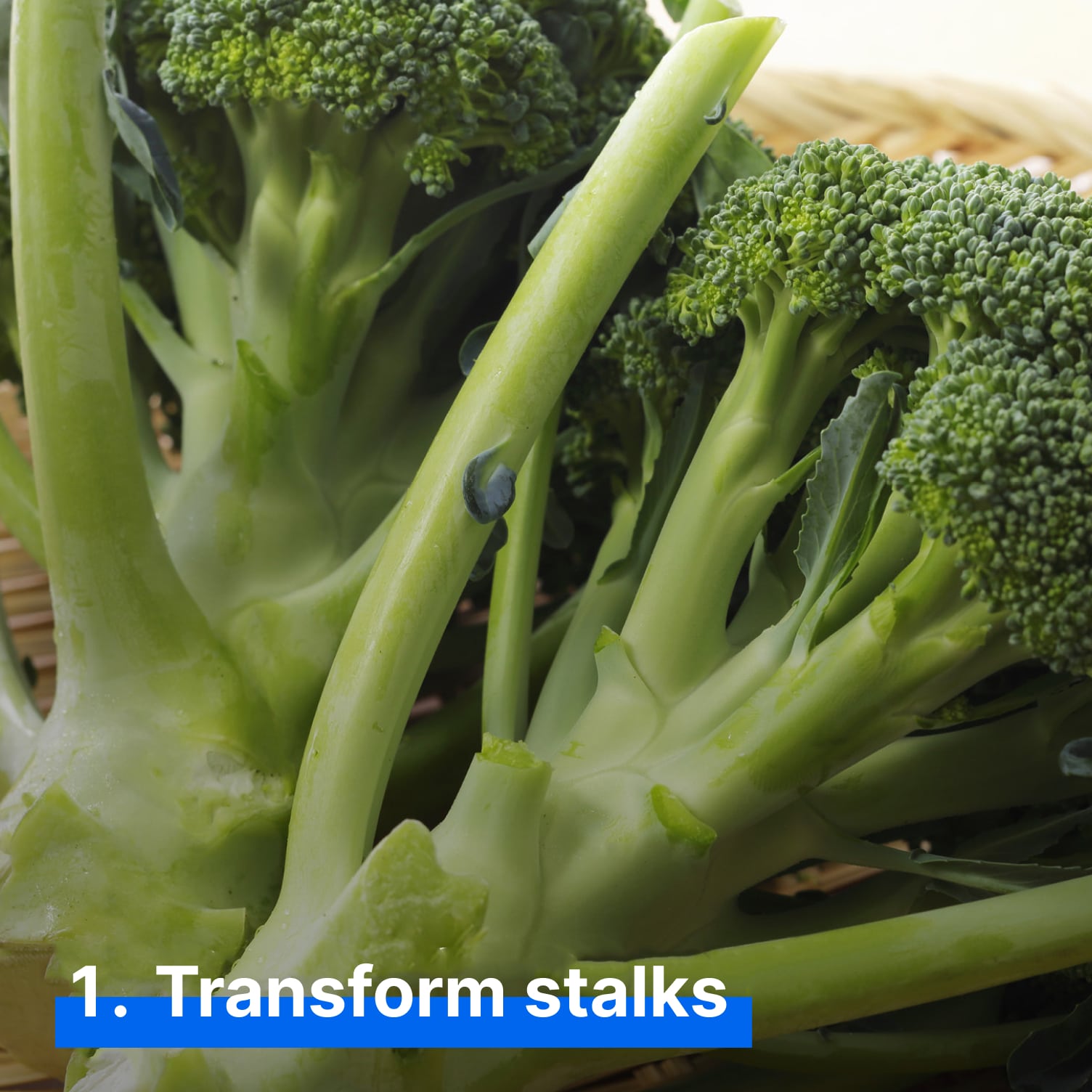
Broccoli and cauliflower rice are a popular wellness trend amade from the stems, says Kapica. Since the stems are tougher, it’s best to chop them into smaller pieces, which helps them tenderize once cooked. Try putting the stems into a food processor and pulsing until they reach a rice-like consistency. Sauté or add frozen cauliflower rice to a smoothie to enhance creaminess. Plus, bagged broccoli or cauliflower rice can be pricey, so this is a good way to save money.

Rather than throwing away the fibrous stem of collard, kale or Swiss chard, chop it up small (this is key so it cooks evenly) and sauté, says Abbie Gellman, MS, RD, chef and owner of Culinary Nutritional Cuisine. “This gives them a nice crunch,” she says.
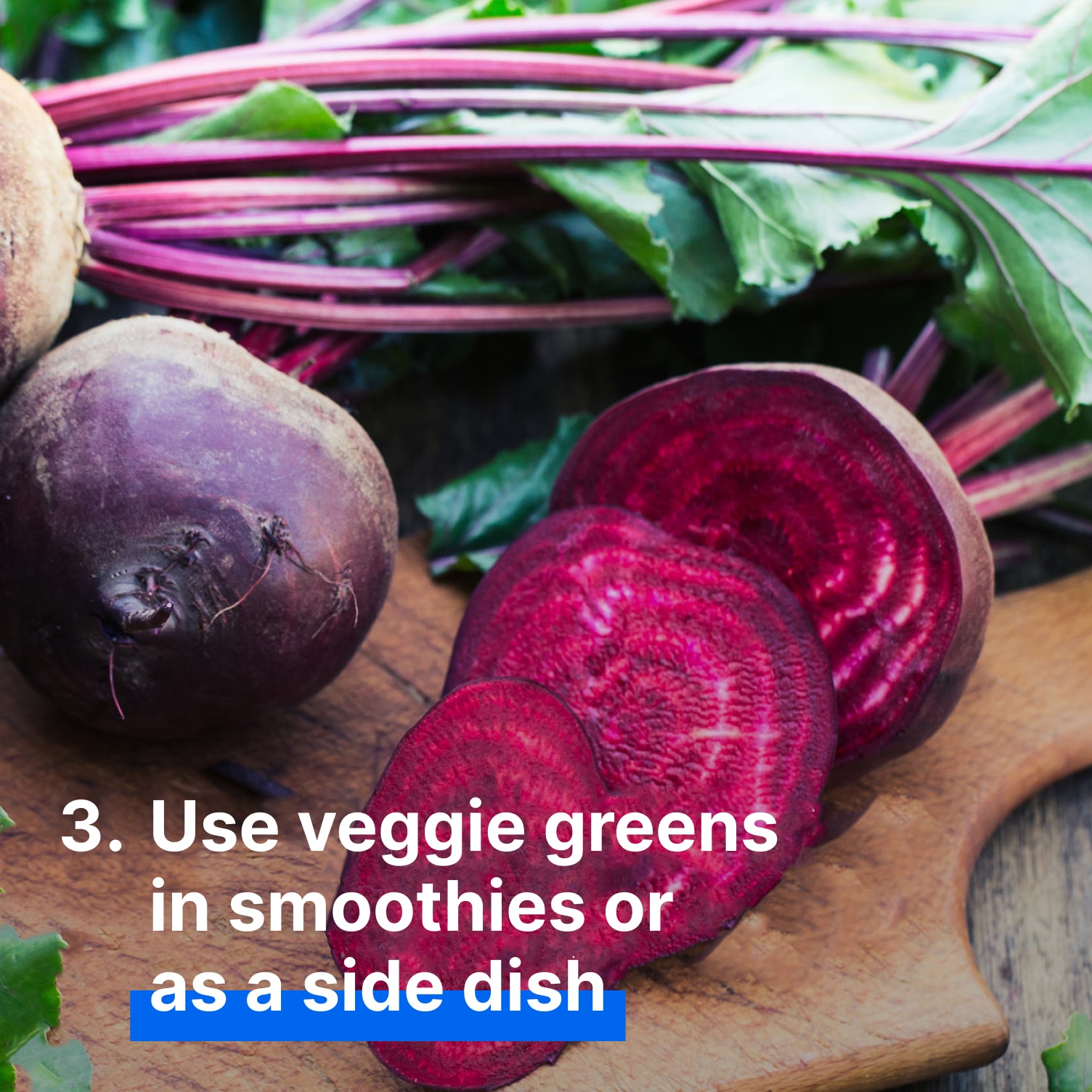
Use veggie greens like leafy beet and radish greens as you would spinach, says Gellman. Throw them into a morning smoothie or sauté in olive oil, garlic, onion, salt, pepper and a pinch of crushed red pepper for a quick dinner side.

Wash potatoes well by scrubbing the skins with a brush under running water. Then, use as is without peeling. “Potato skins contain insoluble fiber, a type of fiber beneficial for digestive health,” says Gellman.
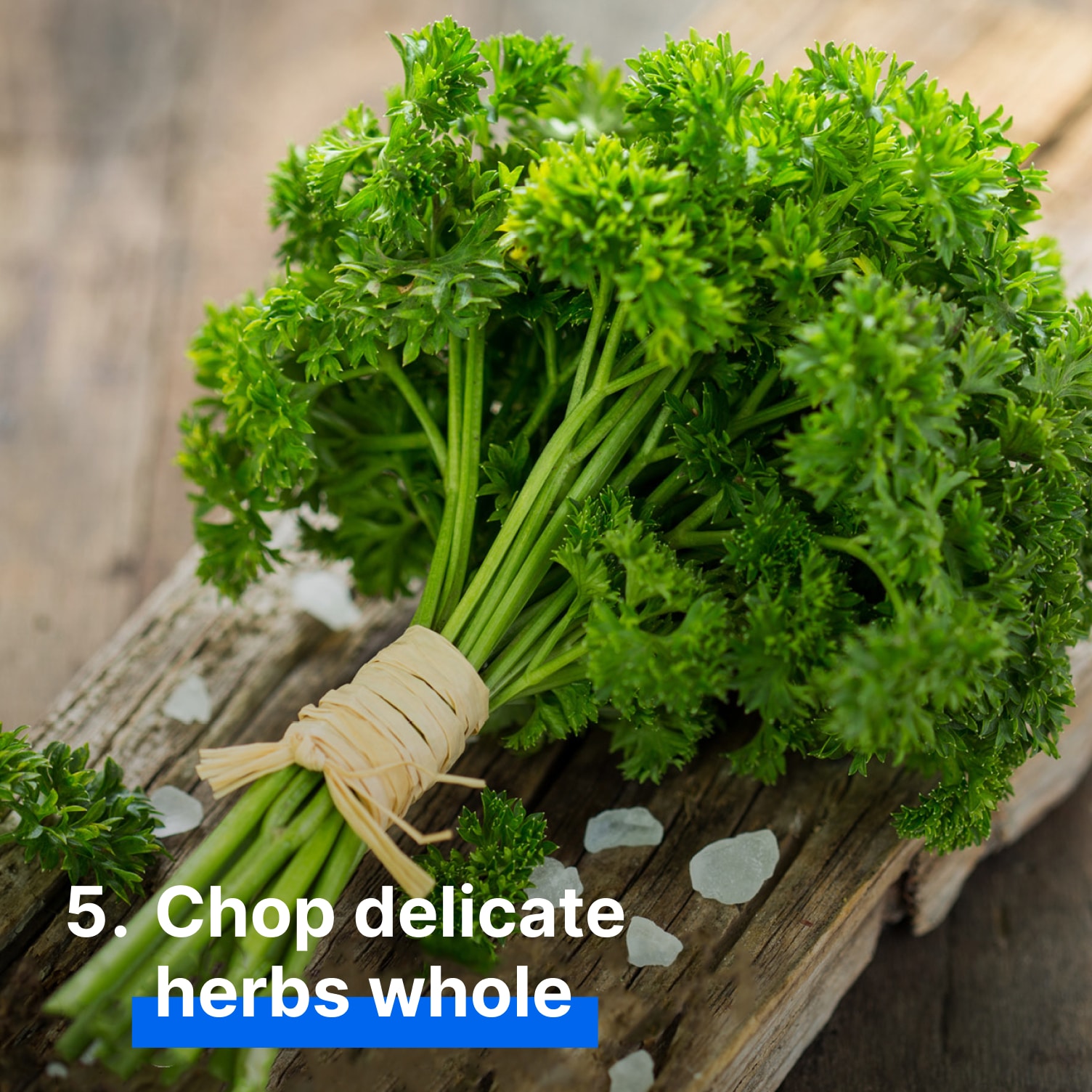
For herbs that have more delicate stems, like cilantro and parsley, don’t bother plucking all the leaves off. Instead, chop up the stems along with the leaves, says Gellman and use them to garnish everything from grain bowls to baked fish. (On the other hand, rosemary and thyme are woodier, so you don’t want to eat these.)

Don’t throw out the seeds from winter vegetables like pumpkin and squash. Rinse them well under water to remove the pulp and pat dry. Then, spread the seeds on a baking sheet and toss with salt, oil (and other spices if you wish). Roast for about 20 minutes at 300°F (148°C) and you have a healthy snack or garnish for salads and soups.
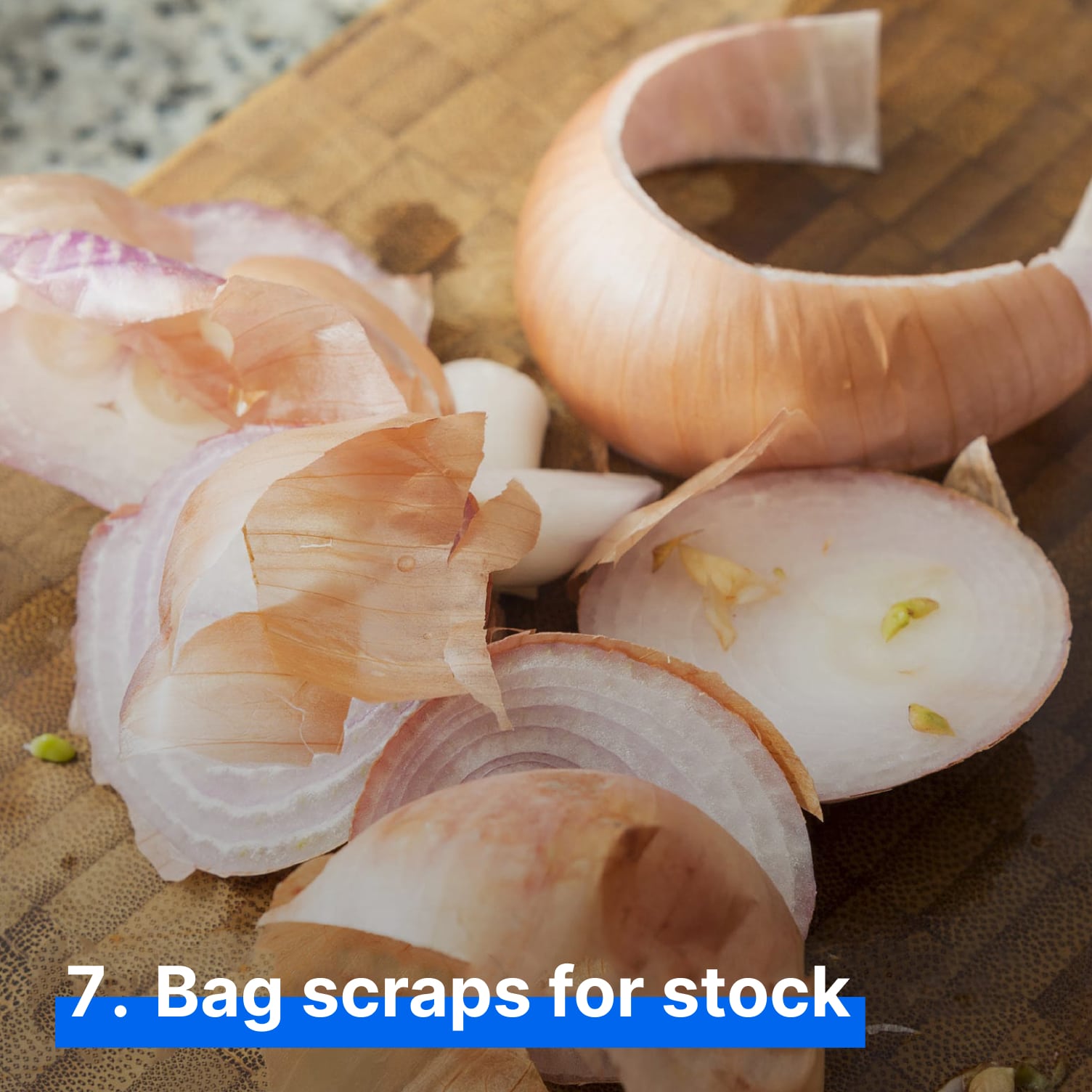
Any scraps you’re absolutely not going to repurpose — like onion skins and mushroom stems — can be tossed in a gallon-sized, freezer-safe bag to make easy, homemade vegetable stock, says Gellman. Once it’s full, dump the bag in a slow cooker, cover with water and add salt and pepper to taste. Cook all day or overnight and strain. Not only will it be unique in flavor, but it will also contain less sodium compared to the packaged variety.
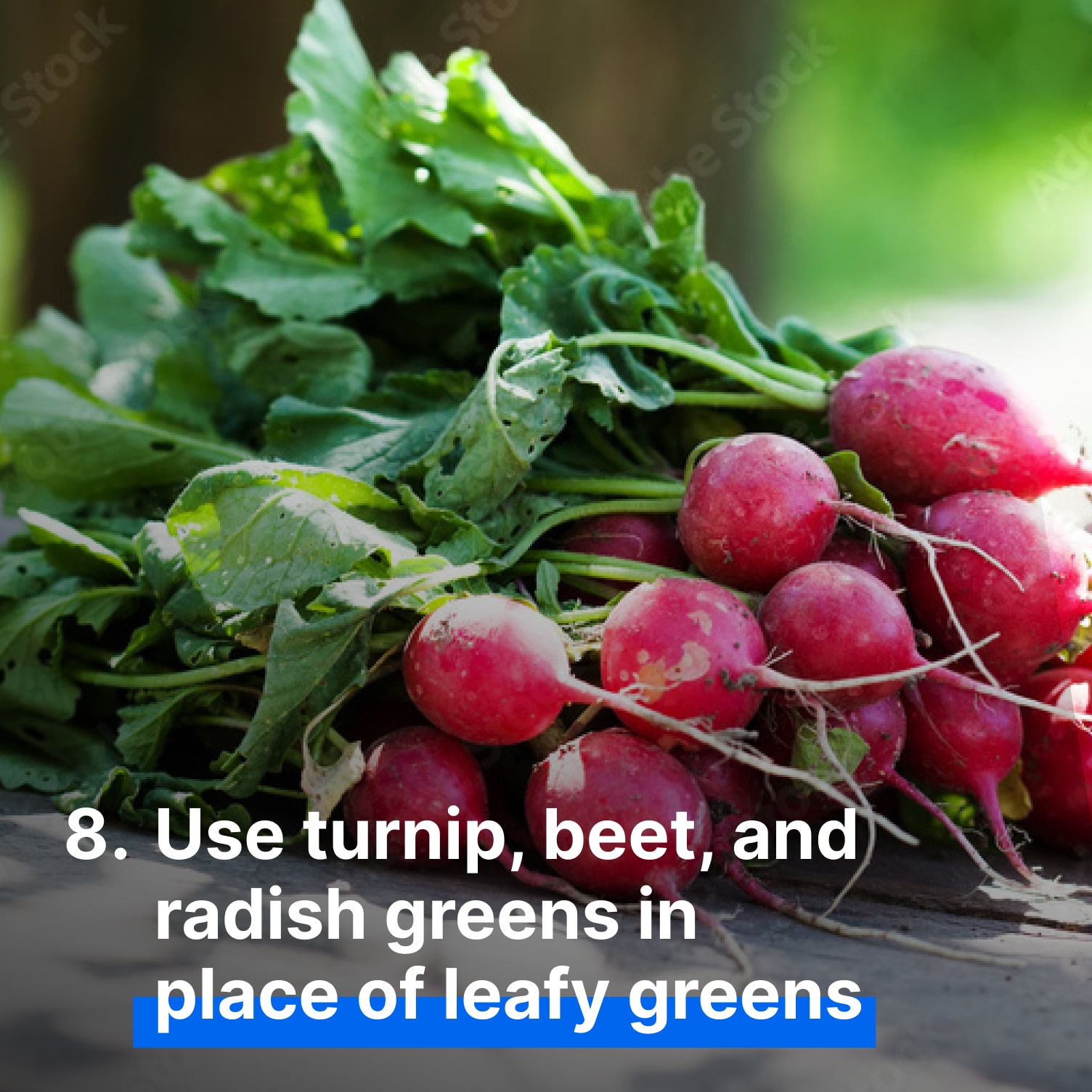
If your grocery store sells these root vegetables with the greens intact, take advantage of them in soups or stir-fries. All have leaves that taste like a more subdued version of the root vegetable itself — beet greens are earthy and a little bit metallic, while turnip and radish greens have a fresh bite — and work great in place of pretty much any leafy green.

Basil pesto is great, but you can also shake things up by using sweet carrot greens or anise-flavored fennel fronds instead. The best thing about using these for pesto is you can use the stems as well as the soft leaves and fronds. Substitute them in your go-to pesto recipe.

When peeling ginger, don’t throw away the peelings. They’ve got plenty of sweet, spicy ginger flesh stuck to them, so they’re perfect for making tea. Boil about 1/4 cup of ginger peelings with 2 cups of water for a mild ginger tea you can drink hot or cold.
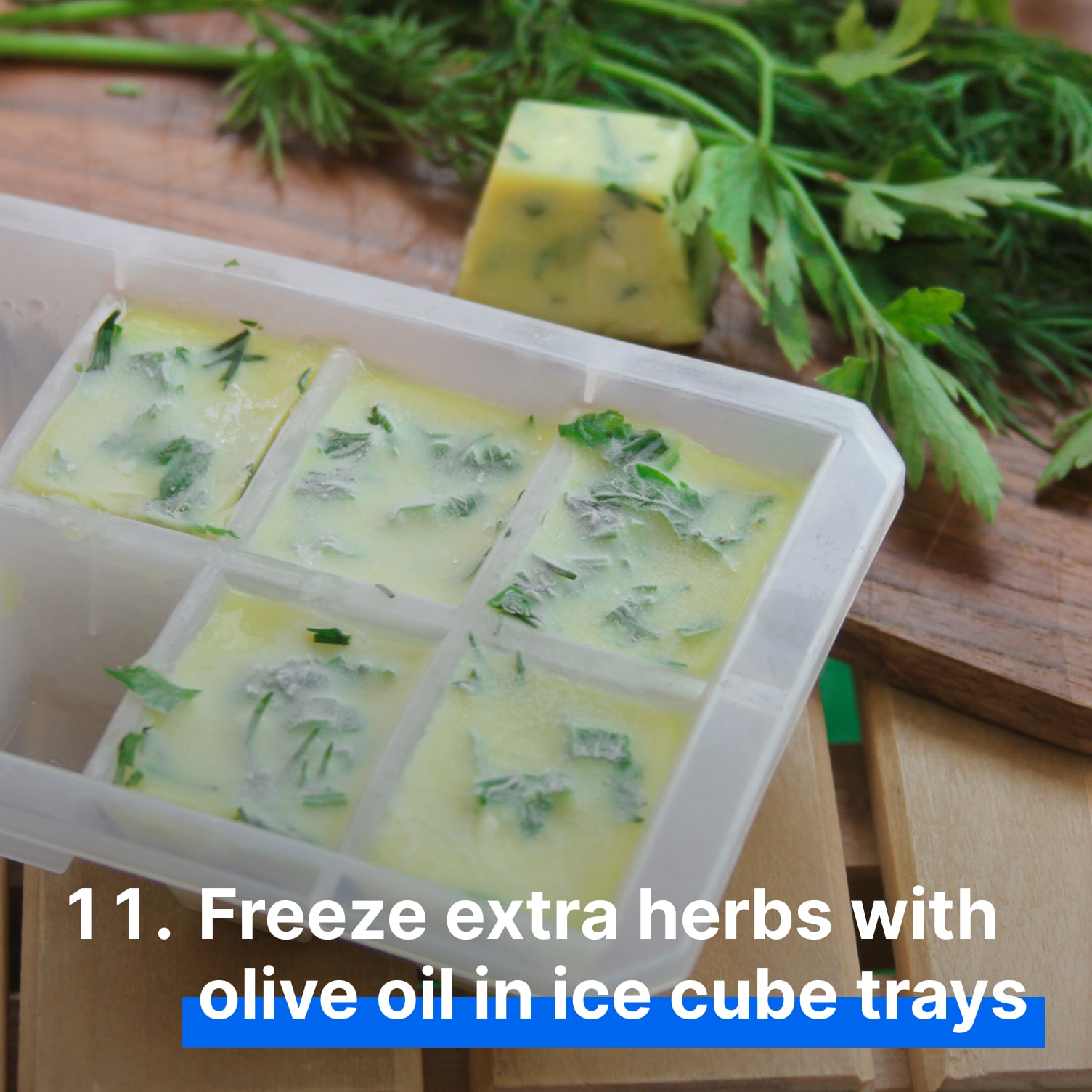
It’s all too easy to buy a bunch of parsley or cilantro for a single recipe, then let all but a handful wilt in your fridge over the following weeks. Instead of falling prey to this trap, save any herbs you don’t use right away by chopping them up, mixing them with olive oil and pouring that mixture into an ice cube tray to keep in the freezer. Then, use a cube to finish a stir-fry or a pasta (it’ll melt right in the pan) or microwave it to thaw and pour the herb oil over roasted meat or veggies.
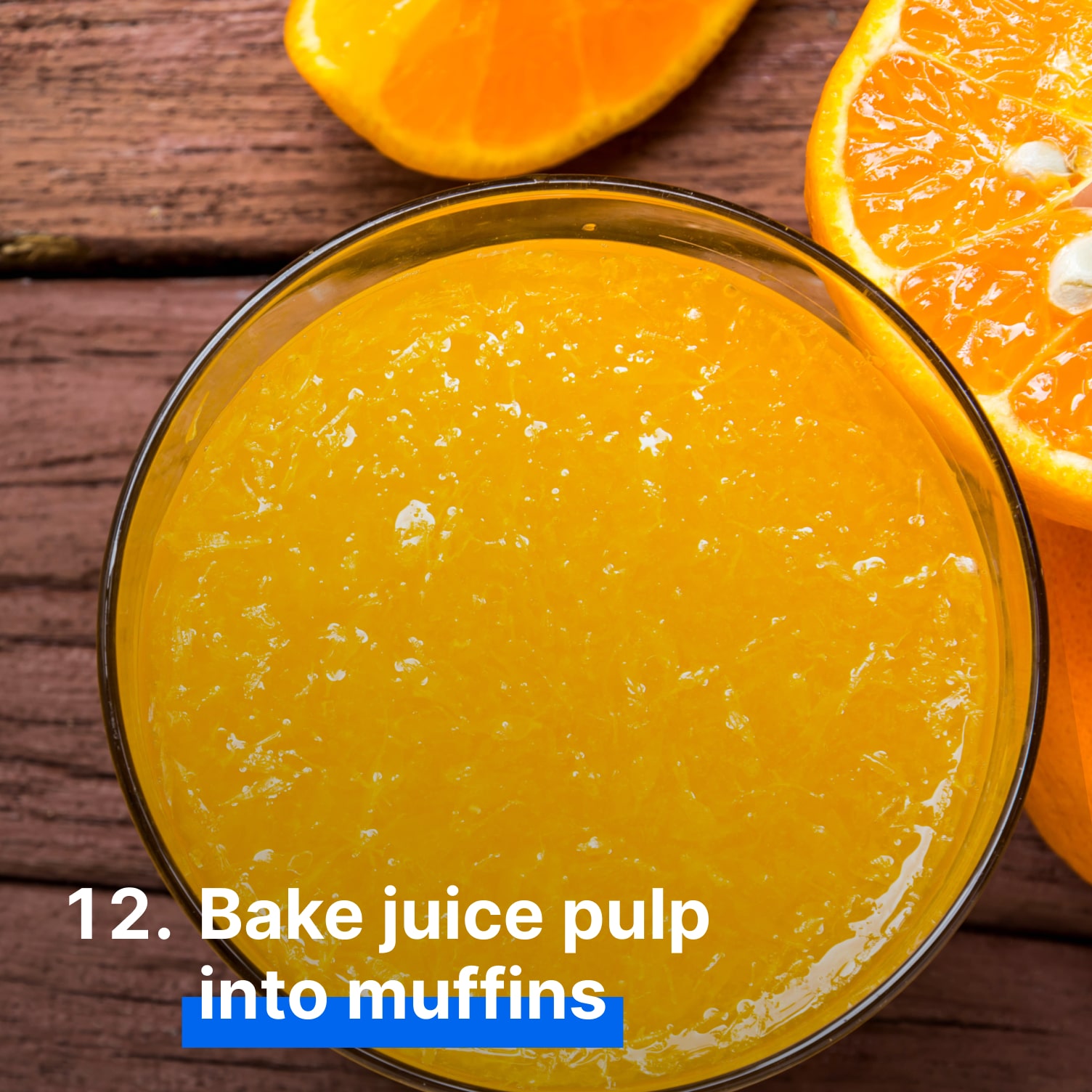
If you have a juicer and use it regularly, you know how much pulp gets left behind with every use. Instead of discarding it, bake it into fruit- and veggie-packed muffins — you’ll add nutrients and fiber to your baked goods, and you’ll cut down on waste.

Before you peel or juice a lemon, lime, orange or grapefruit, use a microplane or sharp vegetable peeler to remove the zest — the brightly colored outside of the fruit that comes off before you get to the bitter white pith. You can preserve grated zest in olive oil to add to pastas, salad dressings or sauces. Another great option: Put big pieces of peeled zest in your water pitcher to add a subtle flavor and boost hydration.
Originally published February 2020, updated April 2023
Ready to take the next step? Unlock MyFitnessPal Premium to access custom goal settings, quick-log recipes, and guided plans from a registered dietitian. Premium users are 65% more likely to reach their weight loss goals!
